
eBook - ePub
Accessories of Dress
An Illustrated Encyclopedia
Katherine Lester, Bess Viola Oerke
This is a test
Buch teilen
- 608 Seiten
- English
- ePUB (handyfreundlich)
- Über iOS und Android verfügbar
eBook - ePub
Accessories of Dress
An Illustrated Encyclopedia
Katherine Lester, Bess Viola Oerke
Angaben zum Buch
Buchvorschau
Inhaltsverzeichnis
Quellenangaben
Über dieses Buch
Drawing upon a vast number of historical sources, the authors of this useful reference have created an entertaining account of the forms of personal adornment men and women have used throughout the ages to enhance their wearing apparel. From hats, veils, wigs, and cosmetics, to cravats, shawls, shoes, and gloves, to walking sticks, handbags, fans, and furs, the engaging commentary displays the humor and personal charm of the many-sided story of accessorized apparel. 644 figures and 59 plates.
Häufig gestellte Fragen
Wie kann ich mein Abo kündigen?
Gehe einfach zum Kontobereich in den Einstellungen und klicke auf „Abo kündigen“ – ganz einfach. Nachdem du gekündigt hast, bleibt deine Mitgliedschaft für den verbleibenden Abozeitraum, den du bereits bezahlt hast, aktiv. Mehr Informationen hier.
(Wie) Kann ich Bücher herunterladen?
Derzeit stehen all unsere auf Mobilgeräte reagierenden ePub-Bücher zum Download über die App zur Verfügung. Die meisten unserer PDFs stehen ebenfalls zum Download bereit; wir arbeiten daran, auch die übrigen PDFs zum Download anzubieten, bei denen dies aktuell noch nicht möglich ist. Weitere Informationen hier.
Welcher Unterschied besteht bei den Preisen zwischen den Aboplänen?
Mit beiden Aboplänen erhältst du vollen Zugang zur Bibliothek und allen Funktionen von Perlego. Die einzigen Unterschiede bestehen im Preis und dem Abozeitraum: Mit dem Jahresabo sparst du auf 12 Monate gerechnet im Vergleich zum Monatsabo rund 30 %.
Was ist Perlego?
Wir sind ein Online-Abodienst für Lehrbücher, bei dem du für weniger als den Preis eines einzelnen Buches pro Monat Zugang zu einer ganzen Online-Bibliothek erhältst. Mit über 1 Million Büchern zu über 1.000 verschiedenen Themen haben wir bestimmt alles, was du brauchst! Weitere Informationen hier.
Unterstützt Perlego Text-zu-Sprache?
Achte auf das Symbol zum Vorlesen in deinem nächsten Buch, um zu sehen, ob du es dir auch anhören kannst. Bei diesem Tool wird dir Text laut vorgelesen, wobei der Text beim Vorlesen auch grafisch hervorgehoben wird. Du kannst das Vorlesen jederzeit anhalten, beschleunigen und verlangsamen. Weitere Informationen hier.
Ist Accessories of Dress als Online-PDF/ePub verfügbar?
Ja, du hast Zugang zu Accessories of Dress von Katherine Lester, Bess Viola Oerke im PDF- und/oder ePub-Format sowie zu anderen beliebten Büchern aus Design & Fashion Design. Aus unserem Katalog stehen dir über 1 Million Bücher zur Verfügung.
Information
Thema
DesignThema
Fashion DesignPart I
ACCESSORIES WORN ON THE HEAD
CHAPTER 1
The Hat
There came up a lass from a country town
intending to live in the city,
In a steeple-crown hat and a Paragon gown
who thought herself wondrous pretty:
Her Petticoat serge, her stockings were green,
her smock cut out of a sheet, Sir;
And under it all, was seldom yet seen
so fair a young maid for the street, Sir!
intending to live in the city,
In a steeple-crown hat and a Paragon gown
who thought herself wondrous pretty:
Her Petticoat serge, her stockings were green,
her smock cut out of a sheet, Sir;
And under it all, was seldom yet seen
so fair a young maid for the street, Sir!
Roxburgh Ballads, 1685
THROUGH the centuries the hat has played a varied and, at times, an amusing role in the history of dress. Today it is regarded as an essential detail in the costume of both men and women. In the apparel of women the hat is comparatively modern, whereas in men’s dress, as a simple cap or hood, it dates back to remote times. From this ancient and humble beginning, followed by constant changes through the centuries, it has emerged as the indispensable head covering of moderns.
All primitive peoples have worn the simple, close-fitting cap. Figure 1. Some form of the cap was worn by the Egyptians, the Greeks, the Romans, the Gauls, the Franks, and the Anglo-Saxons. It was used as early as 4000 B.C. From that distant period down to the fourteenth century it continued to be the accepted head covering for the great mass of the people. Though hats came at a much later date, both the words “hat” and “cap” seem to have had their origin in terms used to designate the primitive home. Long before these peoples gave much thought to clothes they built themselves shacks or huts which, according to Planché,1 they called haet or hutt. Their head coverings imitating the ancient hut were probably given the same name, a term which through the centuries changed to the modern word hat. The word “cap” comes from the Anglo-Saxon cappe; however, Planché, an early authority writing on the subject of costume, points out that the Belgic Britons had in their language the word cappan, used by later peoples of the same region in describing their conical caps made of rushes and curiously resembling the ancient hut made of wattles tied together in a similar way and called cab, cabban, whence our modern word cabin. So it would appear that some relation seemed to exist, particularly in these early days, between the primitive home and the first head covering.
The ancient cap made of skins, often with the shaggy side out, of cloth, of woolen stuff, and later of leather, probably at first resembled a loose, hoodlike cap, then took on more or less of a conical shape. This was gradually followed by more fitted shapes. The first recorded use of a hat with a brim comes from ancient Greece, where the petasus and pileus, low-crowned, broad-brimmed hats of felt, sometimes likened to a “barber’s basin,” were worn by huntsmen and travelers. However, with rustics of this and later periods, the simple cap, sometimes conical, sometimes with side flaps, continued to be worn. By the fourteenth century the popularity of the cap gave way to the hood, which with its long peak lent itself to many interesting arrangements and so helped to prolong the fashion over a considerable period. Hoods were fashionable for both men and women. Previous to this women had been wearing enveloping veils, short coifs, and, later, chin straps and wimples with head veils. It was not until a much later date that both men and women adopted the hat as it is known today. Consequently, in tracing the development of the modern hat it is necessary to go back through the period of veils and hoods to the little cap which innocently enough started the fashion of hats.

Figure 1. Early Caps Seen in Various Anglo-Saxon Manuscripts of the 9th, 10th, and 11th Centuries
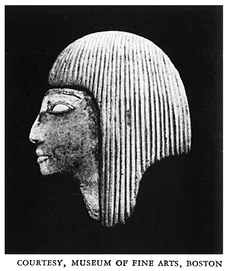
Figure 2. Head of Rameses III, Showing Wig
In Egypt, as in other warm countries, the climate and manner of living had much to do with dress development. Though the hat had no place in the Egyptian wardrobe, the various types of headdress served as worthy substitutes. Persons of all classes occasionally wore caps, some of which were large, others close fitting. Men generally, however, preferred the wig. See page 84. Wigs had been adopted at an early date and were worn as a protective covering from the sun. They were usually constructed of human hair or sheep’s wool. The hair was shaved or cut short and the wig, built upon a netlike foundation, allowed the heat of the head to escape. Figure 2. In fact, the wig far surpassed the modern turban which is worn for the same purpose. Another very familiar head covering was the simple cloth or kerchief fitted about the brow in such a way that it fell to the shoulders, sometimes in two broad bands or lappets which framed the face. Figure 3. Dignitaries of Egypt are seen in a helmet cap, apparently of woolen stuff, rising high above the head. Figure 4. These are usually ornamented with emblems symbolic of office or rank. Chief among the princely insignia were the asp, signifying kingly power; the lotus, the emblem of abundance; and the sacred feather, indicating sovereignty.
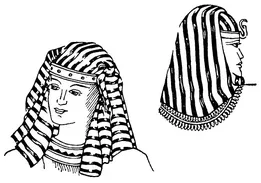
Figure 3. Egyptian Head Covering
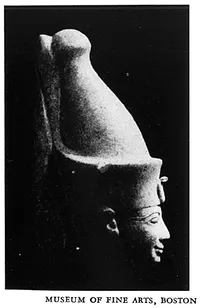
Figure 4. Alabaster Head, Ptolemaic Period
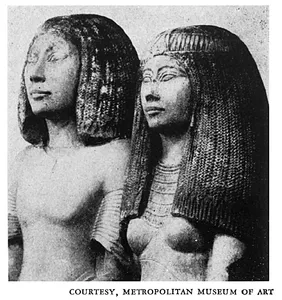
Figure 5. Wigs of an Egyptian King and Queen
Though hats for women came at a much later date and in an entirely different world, it is interesting to note the elaborate wigs, ornamental bands, wreaths, and ribbon which, in a measure, made up to these women of Egypt for the lack of a hat. During the Old Empire and down to the Eighteenth Dynasty (1583 B.C.), elaborate coiffures falling over the shoulders and entirely concealing the contour of the head were worn. Figure 5. These masses of long hair, either plaited or straight, hung at the back, covering the shoulder blades, while two side pieces fell to the front of the shoulders. These side tresses were secured by combs or an ornamental headband. As stated by many authorities, these large constructions must have been wigs, for the same woman is frequently seen in different coiffures, some of which are long and elaborate, others short. In still others a little of the natural hair is seen under the wig. The wall painting “The Deceased Entertained by the Goddess Nut” gives a very definite idea of this coiffure of three thousand years ago. PLATE I. The most important ornamental head covering of the early period was the vulture headdress of the Egyptian queen. Both sculpture and painting show the royal lady wearing this emblem of the sacred bird whose plumage covers the head. Figure 6. In marked contrast with this ancient headdress is the tall cap or crown of a much later date worn by Nefertiti, queen of Amemophis IV, who reigned during the fourteenth century, B.C., and whose daughter was the wife of King Tutankhamen. PLATE II. During this later period the former heaviness was abandoned and various styles were accepted. A few examples of the prevailing mode show outstanding bobs; others are long front and back and short on the shoulders. Some show a more natural arrangement of the hair which reveals rather than conceals the contour of the head. Wreaths, ribbon, and the lotus flower turned about the head were used as ornament. Figure 8. It is said that the ribbon which the Egyptian woman tied about her brow, leaving two streamers hanging at the back, is the first sign of the modern hatband.
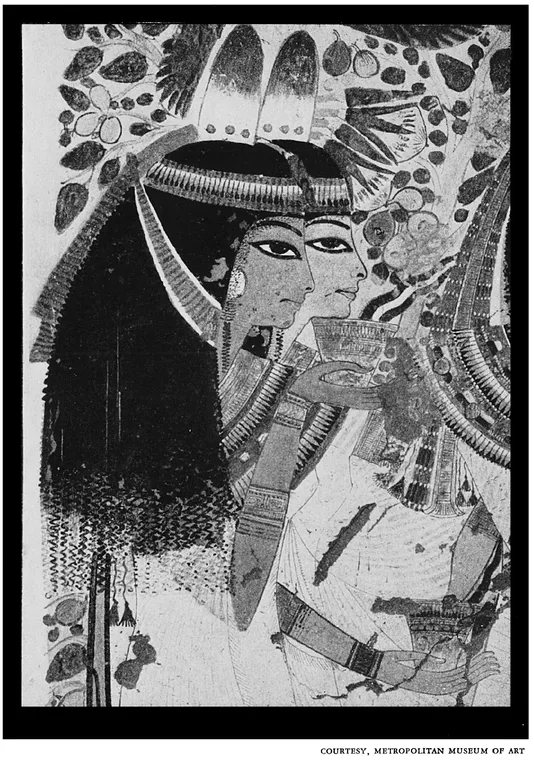
PLATE I. The Deceased Entertained by the Goddess Nut . . . . From an Egyptian wall painting

Figure 6. The Vulture Headdress of an Egyptian Queen, Ptolemaic Period

Figure 7. Headdresses of Egyptian Women
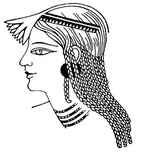
Figure 8. Egyptian, a Style Which Succeeded the Heavy Wig
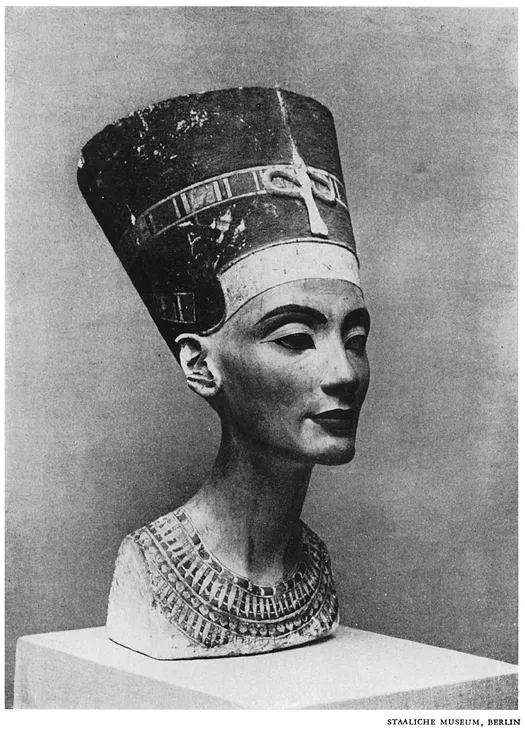
PLATE II. Queen Nefertiti . . . . Bust, painted in limestoue witch eyes of rock crystal
Nefertiti, meaning “The Beautiful one has come,” was the queen of Amemophis IV, 1375-58 B.C.
One of the most familiar types of ancient cap came from Phrygia in Asia Minor. This has passed into history as the “Phrygian bonnet.” Figure 9. Originally it resembled a hood with a pointed, extended crown. bent forward, with flaps hanging to the shoulders. When made of pliant material, the crown lay in a soft fold; when made of leather, the crown supported itself, taking on the form of a helmet. It was later worn in Greece and Italy and, during the thirteenth and fourteenth centuries, was revived in a somewhat similar shape as the hood and worn as a fashionable head covering by both men and women. At this time the tippet or pointed crown assumed many and amusing styles. See page 11. The general shape of the Phrygian bonnet is seen in many later types of headgear. Even in modern times, an occasional molded hat form harks back to this little cap of long ...